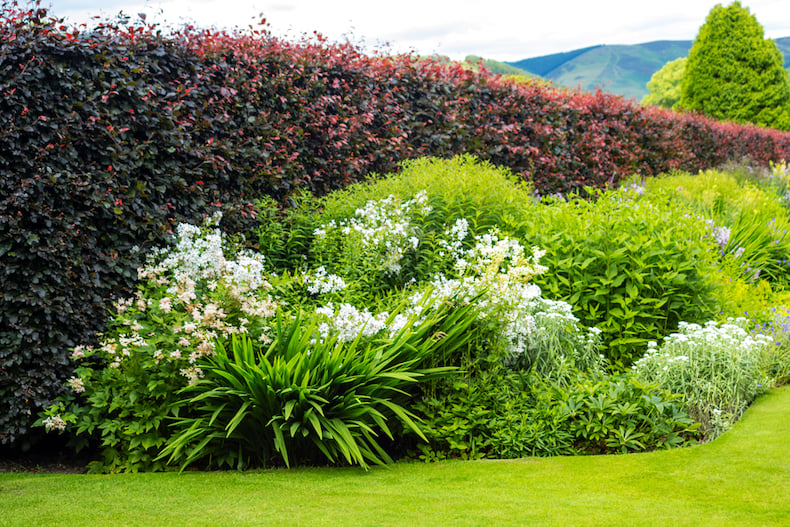Creating a beautiful garden border can significantly enhance the appeal of your outdoor space. One of the best ways to achieve this is by selecting the right hedge plant. Not only do hedges provide privacy and structure, but they also add beauty and value to your property. In this article, we will guide you through the essential factors to consider when choosing a hedge plant for a stunning, low-maintenance border.
Understanding Hedge Plants
What is a Hedge Plant?
A hedge plant is a shrub or small tree that is typically planted close together to form a dense barrier. These plants are often used to create garden borders, privacy screens, or windbreaks. Depending on the variety, hedge plants can be evergreen or deciduous, providing year-round interest or seasonal changes in appearance.
Benefits of Hedge Plants
- Privacy: Hedge plants can block unwanted views and create a secluded outdoor space.
- Noise Reduction: Dense hedges can absorb sound, making your garden a quieter place.
- Aesthetic Appeal: A well-maintained hedge adds structure, color, and texture to your garden.
- Wildlife Habitat: Hedges can provide shelter and food for various birds and beneficial insects.
Choosing the Right Hedge Plant
1. Climate Considerations
Before selecting a hedge plant, consider your local climate:
- Hardiness Zones: Understand which plants thrive in your area’s hardiness zone. This information will help you choose plants that can withstand local weather conditions.
- Sunlight Exposure: Some hedge plants require full sun, while others thrive in partial shade. Assess the sunlight in your garden to make an informed decision.
2. Growth Characteristics
Different hedge plants have varying growth rates, heights, and widths:
- Growth Rate: Fast-growing plants can provide quick coverage, but they may require more frequent maintenance. If you prefer low maintenance, consider moderate or slow-growing varieties.
- Mature Size: Consider how tall and wide the hedge will grow. Ensure you have enough space for the plants to reach their full potential without overcrowding.
3. Maintenance Requirements
Low-maintenance hedges are ideal for busy gardeners. Here are some maintenance aspects to consider:
- Pruning: Some hedge plants require regular pruning to maintain their shape, while others can grow naturally without much intervention. Choose plants that fit your lifestyle.
- Watering Needs: Assess how much water the plants need. Drought-tolerant varieties are best for low-maintenance gardens.
- Fertilization: Some hedges may need regular fertilization to thrive, while others can do well with minimal nutrients.
4. Aesthetic Appeal
Think about the visual impact you want your hedge to have:
- Foliage Color and Texture: Select plants with colors and textures that complement your existing landscape. Consider glossy leaves for a lush look or variegated foliage for added interest.
- Flowering Varieties: Some hedge plants produce beautiful flowers, adding seasonal color to your garden. Choose varieties that bloom when you want to enhance your landscape.
5. Purpose of the Hedge
Consider the primary function of your hedge:
- Privacy Screen: If your goal is to block views, select dense, tall varieties like Lilly Pilly or Mock Orange.
- Windbreak: For reducing wind exposure, opt for sturdy plants that can withstand strong gusts, such as Bamboo or Conifers.
- Decoration: If aesthetics are your main concern, choose flowering or ornamental varieties that enhance the beauty of your garden.
Top Hedge Plants for a Low-Maintenance Border
1. Lilly Pilly Resilience (Syzygium australe ‘Resilience’)
- Description: A hardy, fast-growing shrub with glossy green leaves and fluffy white flowers.
- Height: Can reach up to 3 meters.
- Maintenance: Low-maintenance; requires occasional pruning to maintain shape.
- Ideal For: Dense hedging and privacy screens.
2. Mock Orange (Murraya paniculata)
- Description: This classic hedging plant features fragrant white blooms and glossy foliage.
- Height: Typically grows between 2 to 5 meters.
- Maintenance: Easy to shape and maintain; light pruning is needed.
- Ideal For: Formal hedges and scented borders.
3. Weeping Lilly Pilly (Waterhousia floribunda)
- Description: A graceful tree with softly cascading branches.
- Height: Can grow up to 10 meters.
- Maintenance: Minimal; requires occasional shaping.
- Ideal For: Natural screens and relaxed garden settings.
4. Bamboo (Various Species)
- Description: Fast-growing grasses that can create a dense privacy screen.
- Height: Varies widely depending on species (1-30 meters).
- Maintenance: Requires regular trimming to prevent spreading.
- Ideal For: Contemporary gardens and privacy.
5. Pencil Pine (Cupressus sempervirens)
- Description: A tall, narrow conifer that provides a sleek look.
- Height: Can reach up to 10 meters.
- Maintenance: Low-maintenance; minimal pruning required.
- Ideal For: Formal gardens and as a backdrop for other plants.
Planting Your Hedge
1. Site Preparation
Prepare the site before planting. Here are the steps:
- Clear the Area: Remove any weeds, rocks, or debris from the planting site.
- Test the Soil: Check soil drainage and pH levels. Amend the soil as needed to create optimal growing conditions.
- Mark the Layout: Use stakes and string to mark the desired shape and spacing of your hedge.
2. Planting Techniques
Follow these steps for successful planting:
- Dig Holes: Dig holes twice the width of the root ball for each plant.
- Position the Plants: Place the plants in the holes, ensuring the top of the root ball is level with the soil surface.
- Backfill: Fill the holes with soil, firming it gently around the roots to remove air pockets.
- Water Thoroughly: Water the plants well after planting to help settle the soil.
3. Spacing Considerations
Proper spacing is crucial for healthy growth. Here’s a general guideline:
- For Dense Hedges: Space plants 60-100 cm apart, depending on their growth habits.
- For Looser Screens: Increase the spacing to allow for airflow and light penetration.
Caring for Your Hedge
1. Watering
- Initial Watering: Newly planted hedges require consistent moisture. Water deeply once or twice a week.
- Established Plants: Once established, many hedge plants are drought-tolerant. Water during dry spells for optimal growth.
2. Fertilization
- Spring Feeding: Apply a balanced fertilizer in spring to promote healthy growth.
- Organic Options: Consider using compost or organic fertilizers for a more sustainable approach.
3. Pruning
- Timing: The best time to prune is after flowering for most varieties. This encourages bushier growth.
- Technique: Use sharp, clean pruning tools to make clean cuts. Remove any dead or damaged branches as needed.
Frequently Asked Questions
How quickly will these plants grow?
Most hedge plants establish quickly, providing solid screening within 1–2 years.
Are they suitable for full sun or part shade?
Yes, many hedge plants perform well in both full sun and partial shade.
Do they require regular pruning?
Light trimming keeps hedges neat and encourages dense growth, but they’re generally low maintenance.
Will they attract birds or pollinators?
Yes, particularly varieties like Lilly Pilly that produce flowers and berries.
Can I grow them in pots?
Yes, smaller varieties like Murraya and Lilly Pilly grow well in large containers.
Conclusion
Choosing the right hedge plant can transform your outdoor space into a stunning and functional landscape. By considering factors such as climate, growth characteristics, maintenance needs, and aesthetic appeal, you can select the perfect hedge for your garden. Whether you want privacy, noise reduction, or simply a beautiful border, there’s a hedge plant that will meet your needs and create a lush environment.



